 Weird Stuff
Weird Stuff  Weird Stuff
Weird Stuff  Our World
Our World 10 Ways Your Christmas Tree Is More Lit Than You Think
 Movies and TV
Movies and TV The 10 Coolest Stars to Set Sail on The Love Boat
 History
History 10 Things You Didn’t Know About the American National Anthem
 Technology
Technology Top 10 Everyday Tech Buzzwords That Hide a Darker Past
 Humans
Humans 10 Everyday Human Behaviors That Are Actually Survival Instincts
 Animals
Animals 10 Animals That Humiliated and Harmed Historical Leaders
 History
History 10 Most Influential Protests in Modern History
 Creepy
Creepy 10 More Representations of Death from Myth, Legend, and Folktale
 Technology
Technology 10 Scientific Breakthroughs of 2025 That’ll Change Everything
 Weird Stuff
Weird Stuff Ten Bizarre Facts About The Doge Meme
 Our World
Our World 10 Ways Your Christmas Tree Is More Lit Than You Think
 Movies and TV
Movies and TV The 10 Coolest Stars to Set Sail on The Love Boat
Who's Behind Listverse?

Jamie Frater
Head Editor
Jamie founded Listverse due to an insatiable desire to share fascinating, obscure, and bizarre facts. He has been a guest speaker on numerous national radio and television stations and is a five time published author.
More About Us History
History 10 Things You Didn’t Know About the American National Anthem
 Technology
Technology Top 10 Everyday Tech Buzzwords That Hide a Darker Past
 Humans
Humans 10 Everyday Human Behaviors That Are Actually Survival Instincts
 Animals
Animals 10 Animals That Humiliated and Harmed Historical Leaders
 History
History 10 Most Influential Protests in Modern History
 Creepy
Creepy 10 More Representations of Death from Myth, Legend, and Folktale
 Technology
Technology 10 Scientific Breakthroughs of 2025 That’ll Change Everything
Top 10 Best Military Forces In History
The history of humankind is essentially the history of war itself. For as long as people have existed, so have reasons for them to fight, either for territorial domination, resources, or, in more recent cases, fossil fuel reserves. And throughout history, some units have fared much better at the job than any other, as we’re about to find out.
These are some of the most successful and celebrated military units in history. In addition to their prowess in war, their reputations alone gave enemy soldiers pause long before they’d stepped onto the battlefield. The fear their mention struck into the hearts of warriors was a weapon in and of itself.
10 The Immortals
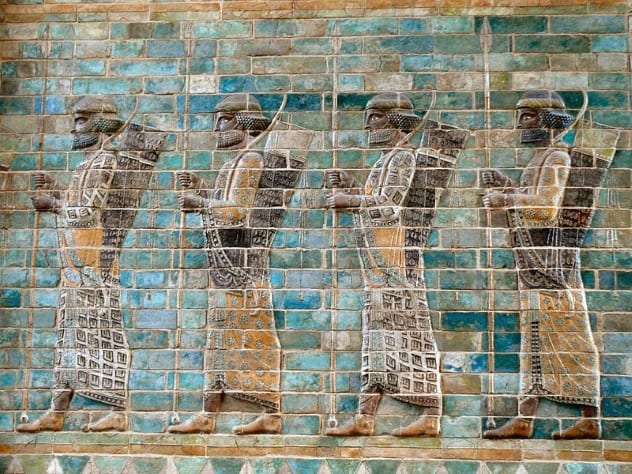
A lot has been said and written about the Spartan war with Persia during the ancient times, though we forget that most of it doesn’t narrate the full story. The Spartans, even though outnumbered, had a distinct advantage in the form of the narrow mountain pass they were defending during the Battle of Thermopylae, and also, that was only one battle. The force they were fighting, on the other hand, was one of the best in the world at that time.
The Immortals were an elite force of exactly 10,000 men—no more and no less—and were instrumental in many great victories of the Achaemenid Empire (one of the, and possibly the, biggest empire before Ancient Greece) during that time.[1] They wore a minimal amount of armor and relied primarily on scaring the enemy with their fear tactics, much of which was, “Look at those badasses who need no armor.” Even during the Battle of Thermopylae, they ended up succeeding by attacking the rear of the Spartan defense, and they won most of the battles they ever took part in. The Immortals were one of the most feared units of the ancient world, no matter what the movie 300 would have us believe. (Actually, the movie did accurately represent how fearsome they were.)
9 Thessalians
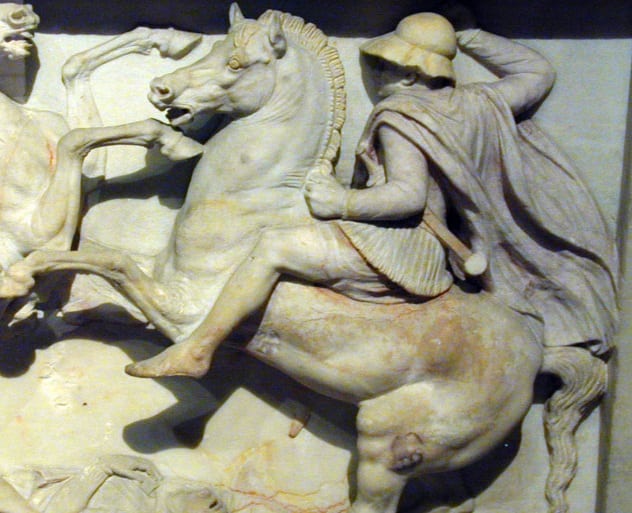
Alexander the Great’s massively successful conquest of vast regions of Asia is largely attributed to his prowess as a capable general, and while that may be true to an extent, what is often missed is the backing of the capable army left to him by his father. When they started out, Macedonia would have never had a chance against the cavalry-heavy armies of Persia, though things changed when they conquered the kingdom of Thessaly (now in modern Greece, obviously) and got their elite Thessalian cavalrymen, along with the rest of Philip II’s trained army.
Now, they weren’t just known for their victories in Greek armies; Thessalians were legendary cavalrymen at a time when empires in the region were still finding their way around horses and were used as mercenaries to great success by other empires. But it was when Thessaly was conquered by the Macedonians that they truly lived up to their potential. By far one of the best units of Alexander’s armies, they were the only unit which participated in all the great battles during Alexander’s invasion of Persia, and they were instrumental in his victories. It was said that it was nearly impossible to defeat a Thessalian unit in formation due to their rhomboid arrangement, rather than the usually deployed wedge one, and their loyalty to Alexander.[2]
8 Genoese Crossbowmen
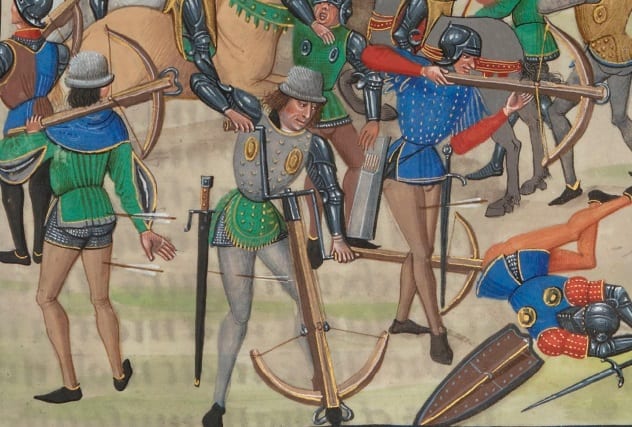
The Middle Ages in Europe were a curious mix of technological awakening, an unforeseen exchange of various ideas between different cultures, and brutal wars. It was a time when some of the earliest iterations of what would eventually turn into modern military tactics would develop. While there were your famous knights and cavalrymen, one unit that doesn’t get as much recognition is Genoese crossbowmen. Crossbows were already a feared weapon, due to their ease of use and ability to pierce armor, though it was crossbowmen from Genoa who really put them on the map. They were some of the most elite soldiers in the region, known for their prowess with the weapon, and were regularly hired as mercenaries by many countries to aid them in their regular rampages across Europe.[3]
While they were a part of many great victories, one of the most prominent ones was when they aided the pro-papacy rebels against the Holy Roman Empire (yes, they were different sides; long story) and successfully defeated the imperial army and looted their treasure during the Battle of Parma in the 13th century. The emperor was so pissed with the casualties they caused that he specifically ordered the fingers of all captured Genoese crossbowmen chopped off, possibly to ask the rest of them to quit it. They clearly didn’t, as they remained a feared mercenary force in Europe until the advent of gunpowder.
7 Nordic Housecarls
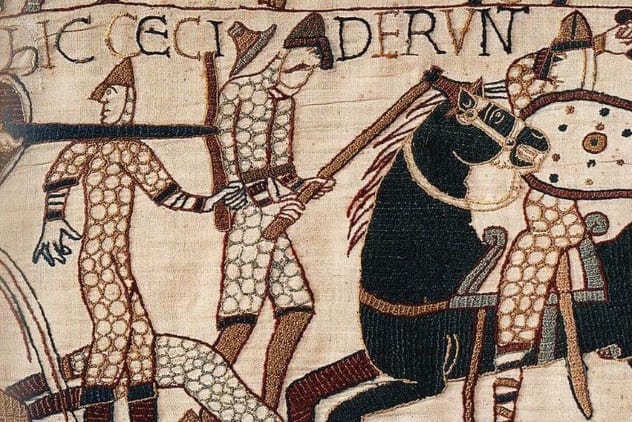
One of the most important and pivotal parts of British history is when the Vikings showed up. After years of honing their marauding skills and building their own consolidated empires in the north, they made their way to English shores for riches and possible knowledge of what lay further west.
With them, they brought their unique fighting styles and weapons and, of course, their own brand of elite corps that hadn’t been seen in the region before: housecarls (also known as huscarls). Before the Norman conquest, housecarls used to be personal bodyguards to the various Nordic kings, though it was when the Danish king Canute (aka Cnut) conquered England that they started showing up in the records as one of the most fearsome fighting units in Europe.
Many subsequent English kings employed housecarls as an elite part of their forces as well as provided them with various administrative roles and senior political positions along with their traditional cutting-people-down duties, somewhat like knights in later centuries.[4] (The housecarls were also covered head-to-toe in mail armor.) They traditionally fought with heavy two-handed battle axes, though were also proficient with spears and swords with their trademark kite-shaped shields.
6 Argyraspides
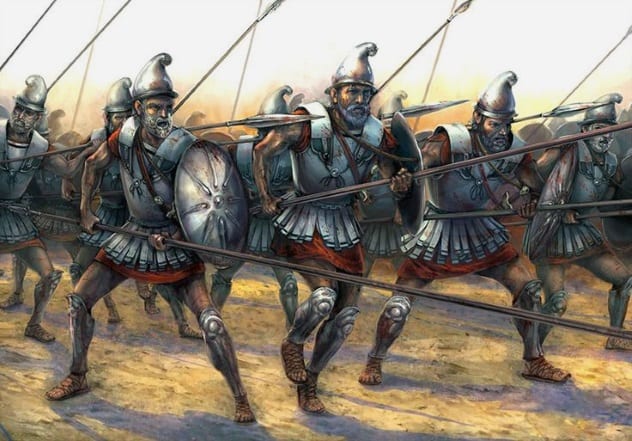
Another one of the best units from Alexander the Great’s army, Argyraspides are also sometimes referred to as “silver-shield bearers.” While sources on this are shaky, it is said that the silver was due to a prophecy by the Oracle—who Alexander used to famously trust in—who claimed that he would conquer the world on the back of silver. Regardless, just the fact that one of the best generals in history would bestow a unit with literal silver on their shields should tell you something about how good they were.
It wasn’t until the end of Alexander’s reign, when he went to India on his final campaign, that the Argyraspides were formed and given their silver shields. They were sort of his personal bodyguards on the battlefield and, along with the shields, carried the hoplite dory (a spear) as their main weapon. They were also battle-hardened, above a certain age (50 to 70, depending on the sources from that time), and were trusted by Alexander above all others, though that might be due to good ol’ racism, as they were Macedonian in origin, and he tended to not give elite positions to soldiers from conquered nations. Regardless, it’s historically established that they were by far the best unit in his army at the end of his campaign. They were also extensively used by the splinter kingdoms made by his generals after his death, particularly the Seleucid Empire.[5]
5 Almogavars
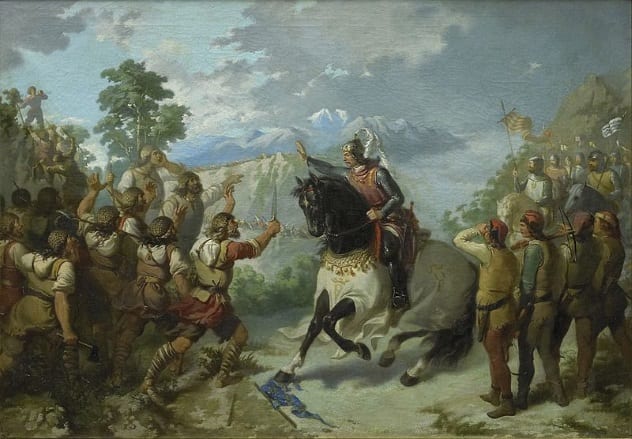
Most of what we hear about Catalonia today is from its recent calls for independence from the Spain and the Spanish not wholly appreciating that demand, as any modern state would be expected to. What we don’t realize is that Catalonia was once a power to be reckoned with on its own, and it wasn’t until far later that they were consolidated into the Spanish Empire. During the 13th century, Catalonia, along with its bigger dynastic cousin in the Kingdom of Aragon, turned into one of the strongest unions in all of Europe, and the credit could be solely given to the Almogavars, mercenary mountain soldiers from Catalonia who were also one of their best units around at the time.[6]
Originally chosen from the natives in the region, the Almogavars were an elite force of soldiers adept at fighting in the mountains and were known for attacking at night. They famously wore no or very little armor, all of which combined to give them what no other kingdom they were at war with had; mobility across the Iberian terrain. And they had a lot of enemies, including the Byzantine Empire (who they were allied with at first but turned against as soon as their leader was assassinated by them), the Turks, Genoa, and pretty much anyone around the Mediterranean region stupid enough to pick a fight with them. The war between Christianity and Islam—of which the Iberian Peninsula, particularly Spain, was a focal point—at the time is what they’re remembered for the most; they were a part of some of the most pivotal victories on the Christian side, including taking back Constantinople.
4 Tuskegee Airmen
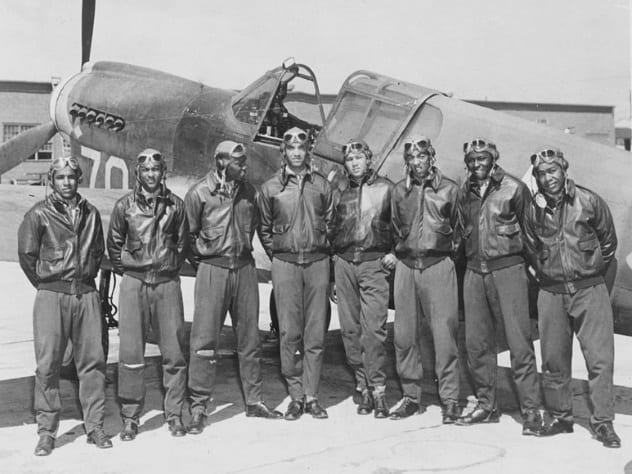
“Tuskegee Airmen” is a name given to units of African American pilots in World War II, and if you remember, the US was still a segregated society at that time. The pilots were recruited from the University of Tuskegee in Alabama, even though Roosevelt had to go against many of his generals before making the decision due to old-fashioned racism. That was only until they were put into service, though, as they turned out to be among the best-performing pilots in the war.
Their role primarily consisted of escorting bombers against Germany’s war machine, as the bomber units were still all-white. That was only how it started, though; they were soon destroying German aircraft unlike any others, all the while looking out for the bombers. While it was earlier believed that they had successfully protected all the bombers by the end of the war, a few records uncovered later do mention some bombers that were downed, though their record is still impressive. Overall, they flew over 15,000 sorties, destroyed 261 German aircraft throughout the war, and earned 150 Distinguished Flying Crosses for their performance.[7] Tuskegee airmen were even awarded the Congressional Gold Medal by President Bush in 2007, though many would call that a bit delayed.
3 Caroleans
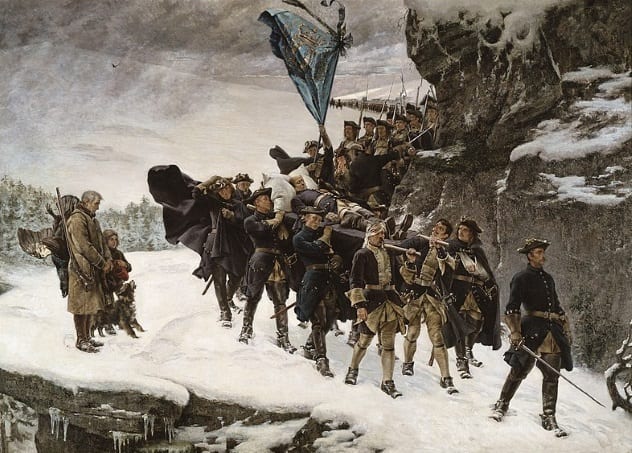
The only things Sweden may be known for today are Volvo, meatballs, and the bitter cold, though we forget that it was once one of the most feared superpowers of Europe, with an empire stretching across Northern, Central, and Eastern Europe in the 17th and 18th centuries. A big reason was their army known as the Caroleans, named after King Charles XI, who conscripted them.
They carried a combination of bayonets, pikes, and rapiers and were specifically trained to attack and not defend, which worked quite well for Charles XI as well as his obviously named son, Charles XII. They proved their merit as one of the most (possibly the most) feared armies in Europe in many battles, the most notable of them being the Battle of Narva, where a force of Caroleans defeated an advancing army of Russians about four times its size. It was only one of the battles in the Great Northern War, fought between Russia and Sweden for the control of various territories.
While they scored some pretty awesome victories in the beginning, they admittedly fell prey to one of the oldest tricks in the book: advancing into Russia during the winter.[8] Russia eventually won the war, which led to Sweden’s influence waning soon after, though Caroleans are still remembered as one of the best armies to have ever been formed in Europe.
2 The Knights Hospitaller
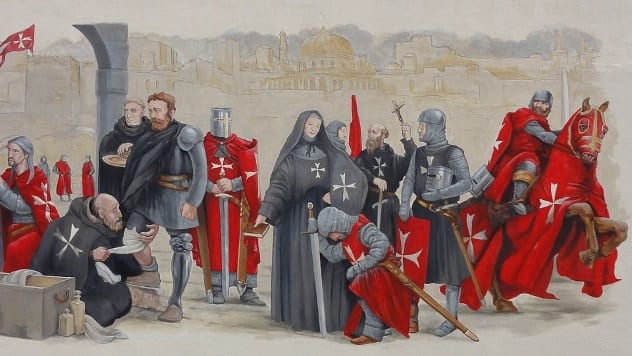
A lot has been said about the Knights Templar, though we either conflate it with or entirely ignore the Knights Hospitaller when we speak about the most potent units that participated in the Holy Wars. Not only were they entirely different units meant for different purposes (the former was more of a multinational corporation, while the latter meant to take care of the pilgrims going to the Holy Land, at least when they started out), but they often found themselves to be at odds with each other.
The Knights Hospitaller were established in the early 11th century as harmless members of a hospital meant to take care of the sick and elderly pilgrims in Jerusalem, though when the city was overtaken (or taken back, depending on how you look at it) after the First Crusade, the pope decided that their roles needed to be expanded. From then until at least the 18th century (as their power was diminished after Napoleon invaded their home kingdom of Malta), they participated in many successful wars, many times being the decisive factor in the many victories against the Ottomans, as well as taking part in most of the Crusades. They also successfully raided many Turkish ships, as they were adept at naval warfare as well. They were proficient with many weapons like lances and maces, though it was the sword—like many other knight brotherhoods of the era—that they really preferred.[9]
1 Reislaufer
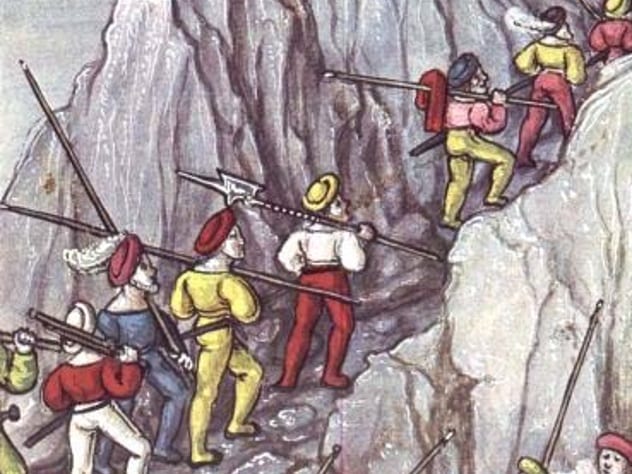
Whenever we think of Switzerland, we think of a peace-loving country that just doesn’t want to have anything to do with the wars of the world and would rather stay neutral than fight. That’s only because we haven’t been paying attention to its history, though everyone who has ever thought of attacking them surely did—and chose to leave them alone. All of it has to do with Swiss pikemen, possibly the most legendary fighting unit in history. (Ever seen the pope’s bodyguards? Yup, Swiss pikemen.)
Their reputation started building up when they successfully pushed back the Hapsburgs after saying “screw it,” declaring independence, and forming their own Swiss Confederacy (Switzerland hasn’t been conquered since) and then going on to repel every attack from the massive Hapsburg armies on the back of their pike-wielding abilities. They were so efficient that not only did the Hapsburgs leave them alone somewhere at the end of the 15th century due to all the defeats, but every other country soon started asking the pikemen to fight for them as mercenaries as well, cementing their reputation as some of the best heavy infantry units in all of Europe.[10]
Reislaufer, Swiss mercenaries who were proficient with pikes, soon went on to fight alongside the best armies in many wars across Europe to great success, right up until pikes got kind of redundant with the advent of firearms. They were known for fighting to the death, and a part of their success was knowing how to repel the cavalry-heavy European armies of the time. While they used other weapons like halberds, swords, and war clubs, it was the pike that they were the masters of.
Himanshu can be found shouting obscenities at strangers on Twitter @RudeRidingRomeo or making amateur drawings on Instagram @anartism_. Has written for Forbes, Cracked, Modern Rogue, and Screen Rant. Pay him money for writing stuff for you here: [email protected]
Read about more elite military forces from history on 10 Brave Warrior Classes Of World History and 10 Insane Ways Spartan Boys Were Made Into Warriors.








